7 minute read
CELEBRATING 70 YEARS OF DREAMERS AND DOERS
Next Article
JULY 24 - 30
EAA.org/Tickets
Bookmark EAA.org/AirVenture for AirVenture 2023 updates
1940 Waco Sre Nc20967 Specifications
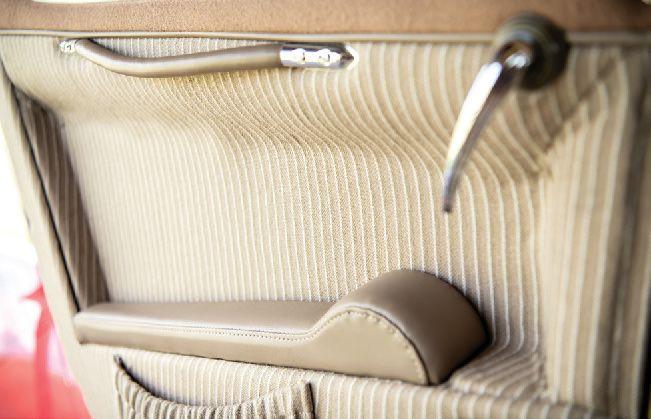
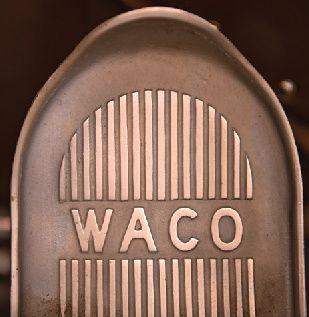
MANUFACTURED UNDER ATC 714. NOT ELIGIBLE TO BE FLOWN BY A SPORT PILOT.

ENGINE: 450-hp Pratt & Whitney Wasp Jr.
LENGTH: 27 feet, 10 inches
HEIGHT: 8 feet, 8 inches
UPPER WINGSPAN: 34 feet, 9 inches
LOWER WINGSPAN: 24 feet, 4 inches
EMPTY WEIGHT: 2,734 pounds
USEFUL LOAD: 1,466 pounds
PAYLOAD (WITH 125 GALLONS OF FUEL): 499 pounds
BAGGAGE: 100 pounds
GROSS WEIGHT: 4,200 pounds
MAX SPEED: 202 mph
CRUISING SPEED: 175 mph
LANDING SPEED (WITH FLAPS): 57 mph
CLIMB RATE: 1,550 fpm
SERVICE CEILING: 23,500 feet
FUEL CAPACITY: 108 gallons
OIL CAPACITY: 6.25 gallons
RANGE (AT 8.5 GPH): 1,070 miles
“The airplane had been kept in a hangar at Delano for 50 years when we bought it from Clinton’s widow, Jane Randolph. It had a half-inch layer of dust, but it was all there and all original. It still had the original logbooks, so it was a perfect candidate to restore. When we loaded the airplane to haul it home, it was like we were taking her husband with us,” Walt reflected poignantly.
Bud Field
Bud’s business success provided the means for him to achieve his dream of founding his own aviation company, Bud Field Aviation. His yearning for a 450-hp Waco was the impetus for acquiring the SRE. “Bud had a big collection of airplanes, and he said, ‘We should buy this SRE, and restore it together, and make it a company airplane.’ Bud was suffering from cancer when we bought it in November 2009,” Walt said. “His in-house restoration shop dismantled the airplane and started doing some of the work. When Bud died in February 2010, Bud Field Aviation kind of went into a holding pattern.”
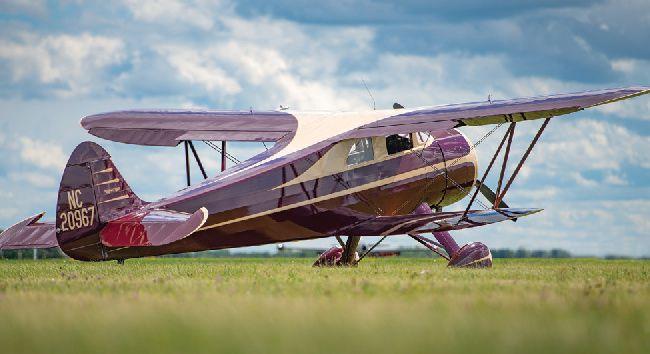
At that point, Walt carried the torch and took the project home from the shop in Calaverus, California, to his office in Livermore. “I had asked Rick Atkins if he would restore the airplane, but he was backlogged for five years, and I didn’t want to wait. So I sent it off to have some woodwork done and brought it home again,” Walt said. “I did some of the sheet metal work and some of the systems, and some overall cleaning up of parts, deciding what did or didn’t need to be restored.”
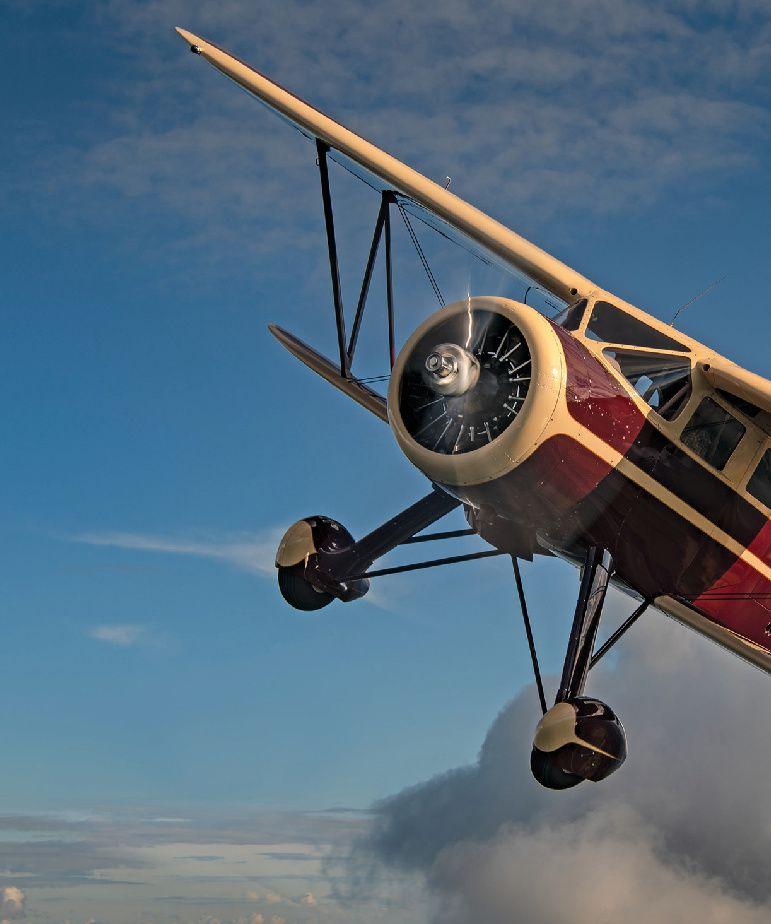
Walt got back in touch with Rick in 2015, and the SRE was soon ensconced in Rick’s one-man restoration shop, Ragtime Aero, in Placerville, California. Rick has earned a distinctive reputation for antique aircraft restorations (as well as providing Cessna 180-185 annual inspections and modifications). Though he’s lost count, it’s safe to say that dozens of spectacular restorations have emerged from his shop throughout 44 years, including Howard DGAs, a Luscombe Phantom, a Monocoupe 110 Special, and Stearmans.
Rick grew up with aviation; both his father and uncle were pilots and owned airplanes. As a youth, Rick enjoyed building model airplanes and working in his father’s hobby shop. He learned full-scale airplane restoration skills while working with Air Repair in Santa Paula for three years before moving to Placerville.
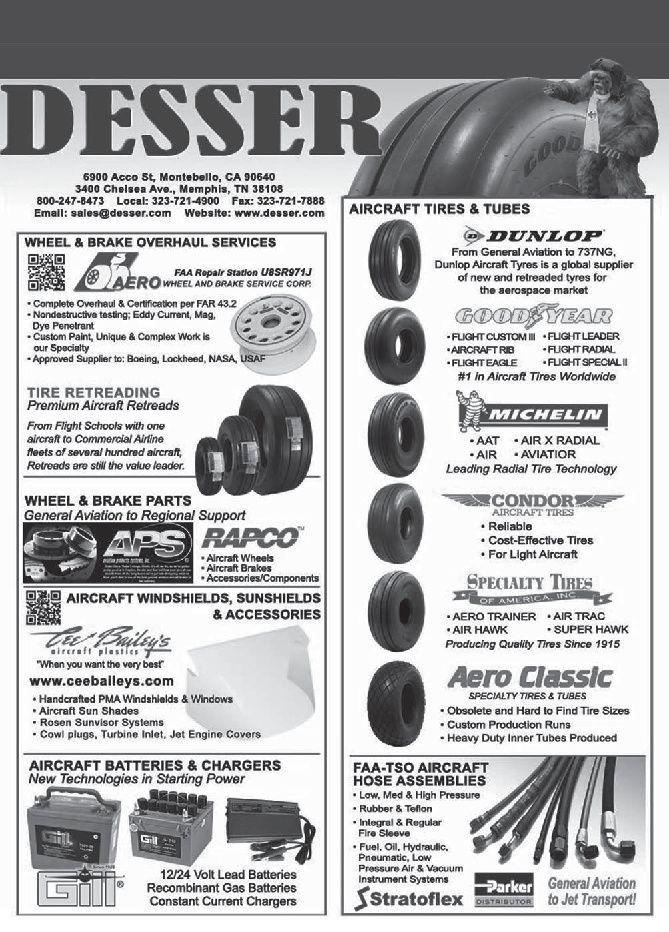
Rick not only coaxes vigor back into derelict airplanes, he masterfully transforms them into fine-flying art. When you behold a Rick Atkins quality restoration, you won’t forget it. Rick said the most rewarding aspect of his work is not only that “the finished airplane is the owner’s vision of what the airplane is supposed to be, but the most important thing is that they get to fly where they want to go, and don’t have troubles with their airplane, and get home safely. When you work on airplanes, especially in this world, you’re working for your friends, and you don’t want anybody hurt. You think about that.”
Rick finished the SRE in a year and a half. “Walt is the greatest guy to work for, and I think he envisions things kind of like I do, as far as what the airplane deserves,” Rick said. “But I’d never touched a Waco until that one! I knew absolutely nothing about the engineering of Wacos, and what was difficult was that I didn’t take it apart. Some of the SRE was done when I got it; the lower wings were almost new. Otherwise, I just got boxes of stuff, so there was a lot of head-scratching involved.”
“Rick’s a magician, an absolute magician,” Walt proclaimed. “He tore all the fabric off and re-sheeted the wings with plywood, and then did the fabric covering using Stits [Poly Fiber] with an Aero-Thane finish. He built all new sheet metal for the landing gear and the cowlings. The airplane has a double firewall, so Rick insulated with some modern materials between them, and he did some ducting on the air coolers. So the cockpit’s very pleasant now; a lot of Cabin Wacos are very hot, and this one he nailed. In fact, another SRE got a firewall forward done by Rick because of the qualities of this one. This caliber of work is so typical Rick Atkins!”
SRE Construction
Similar to other Cabin Wacos, the SRE’s fuselage is built of steel tubing with wooden formers and fairings, which lend a streamlined appearance to this fabric-covered biplane. The wings are composed of spruce spars, spruce and mahogany wing ribs, skinned with plywood and then covered with fabric. The horizontal stabilizers are built of wood, and the other tail surfaces are steel tubing The SRE stands tall on its semi-cantilever gear, and landings are cushioned with oleo struts.

Flying Characteristics
Right off the top, Walt described flying the SRE as follows: “It’s interesting; I’ve owned a G-model Staggerwing, a Spartan Executive, and a DGA-11 Howard, and I kept this Waco. It’s a delight to fly, and it climbs great — about 1,000 fpm. It cruises about 175 mph, and the ailerons and elevators are all leadbalanced, so it’s got great control harmony.”
In the pattern, Walt lowers the electrically operated flaps at 120 mph, slows down to about 100 mph on downwind, then 80 mph on base, and about 75 mph on final. “I three-point it on in the 50-mph range, but it’ll wheel land beautifully. I’ve always been a three-pointer pilot so that’s just what I’m used to,” Walt said, “but it’ll do whatever you ask, and then it’s an easy, straight rollout. It’s very docile on the ground. Goodyear ordered this airplane with a steerable tail wheel, and we’ve had some maintenance fits with that, but it’s nice because you don’t need any brakes to taxi.”

Walt does fly at night, or in the early mornings when it’s still dark, and said the retractable Grimes 250 landing lights illuminate the runway well: “I have one set for taxiing and one set for landings — they shine at different angles so you can see. And the panel lights work great.”
Speed and Comfort
With 108 gallons of fuel on board, and at 22 gph, the SRE can easily travel long distances. Last spring, Walt flew from California to Minneapolis (about 1,500 statute miles) in nine hours. “It moves along pretty good. I’ve flown it to Montana, Palm Springs, and I’ve taken Carlene to LA in it a few times for business,” Walt said. ”It’s also been to Washington and Oregon, so it gets used. I live 60 miles from my office, which is right next to an airport, so I’ve used it to commute to the office a few times.”
The SRE handily combines efficient cross-country capability with plush creature comforts. So much so, Walt said, that “Bud always said he wanted to sit in the back seat and have a cocktail! So in the back, there’s a mini bar. I’ve never used it, but I did it as a tribute to him.”
Authenticity
Walt’s penchant for authenticity spurred him to contact Goodyear in an attempt to obtain details of NC20967’s original paint scheme so it could be replicated. “They gave me such a legal hassle about it, and said that [if I used their logo] it had to be removable within a 24-hour notice, and I needed to notify them anytime I was going to fly it,” Walt said. “So I picked an original SRE scheme instead. Carlene has a maroon 1936 Cord Sportster convertible, and we just kind of fell in love with its colors, so we matched the SRE with a Stinson Maroon. She picked all the interior fabric and upholstery; it’s all vintage automobile stuff. The light sconces and ashtrays are original, and we copied the interior and stitching from old sales information. I like keeping things original, so we wanted to duplicate that effect the best we could.”
With a nod to modern times, the SRE has just a few mods, including Cleveland 650-by-10 wheels and brakes, Aero Fabricators shoulder harnesses, a Garmin GTR 225, ADS-B, and a JPI Fuel Scan 450 fuel totalizer.
In the 200 hours it’s been flown since restoration, Walt said, “We’ve had no issues. It’s got a Tulsa Aircraft overhauled engine and Maxwell Aircraft Service overhauled propeller. I took the sales log that Andy Heins [of the National Waco Club] gave me, and went and found all the instruments, and Keystone restored them. It’s a pretty timepiece; the wheelpants are original, and it still has the flare panel in the cockpit and the flare tubes in the fuselage.”
The SRE is high on Walt’s list of favorites, and he enjoys sharing it. “I’m very fortunate,” Walt said. “The Waco SRE is great. It’s probably one of the easier-to-fly taildraggers I own, and I let lots of people fly it, because it’s such a nice airplane. It was a real custom-built airplane in 1940, and 83 years later, it’s still amazing!”
(Editor’s Note: To learn more about Walt Bowe and his airplanes, see the following Vintage Airplane articles: “Shining Star — Walt Bowe’s Lockheed Vega,” March/April 2021, by Rich Davidson; “Collecting Can Be a Disease,” May/June 2021, and “Keepin’ Up a Family Tradition — Walt Bowe’s D-18 Beech,” September/October 2015, by Budd Davisson; and “Antique Kid,” May/June 2013, by Jim Busha.)



